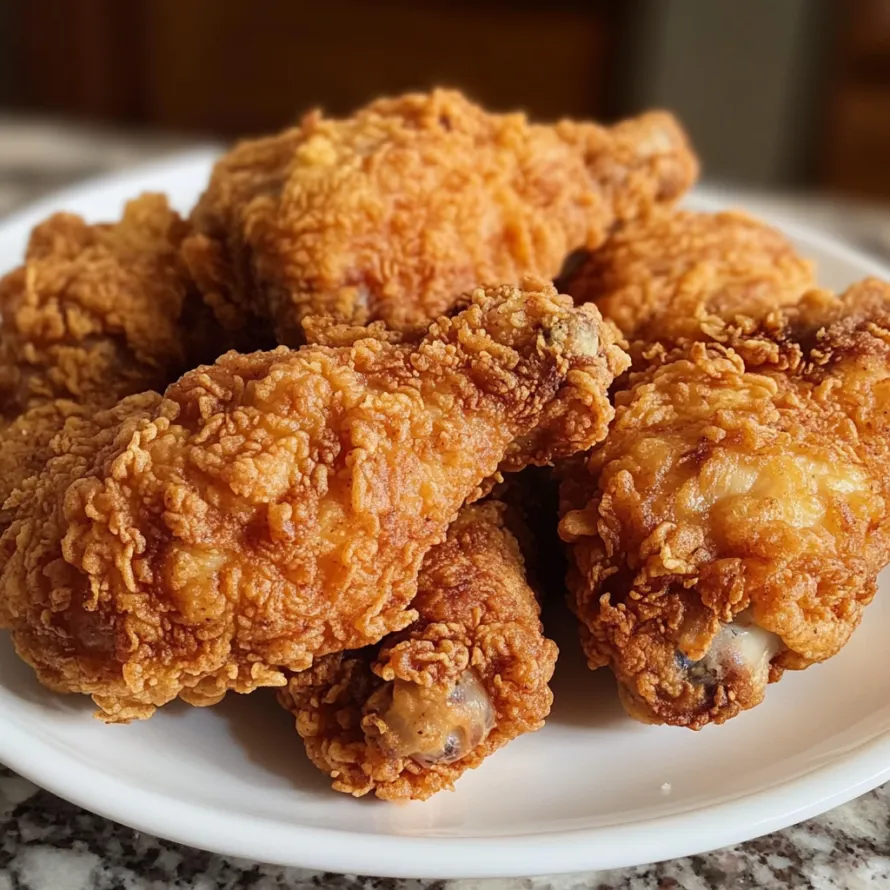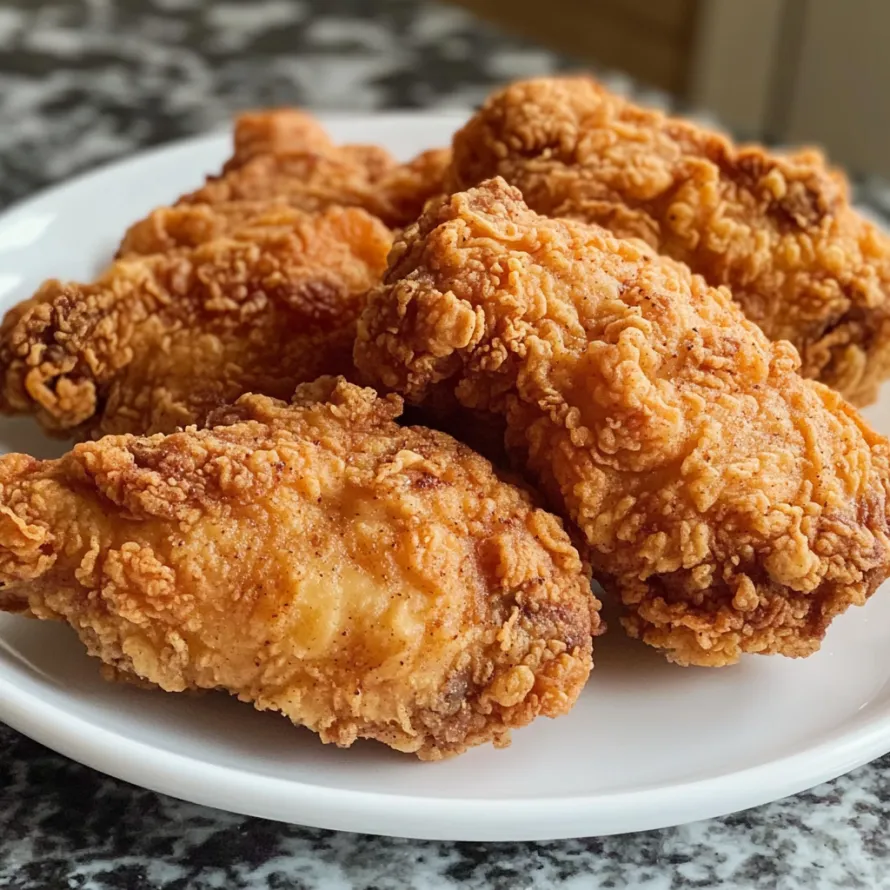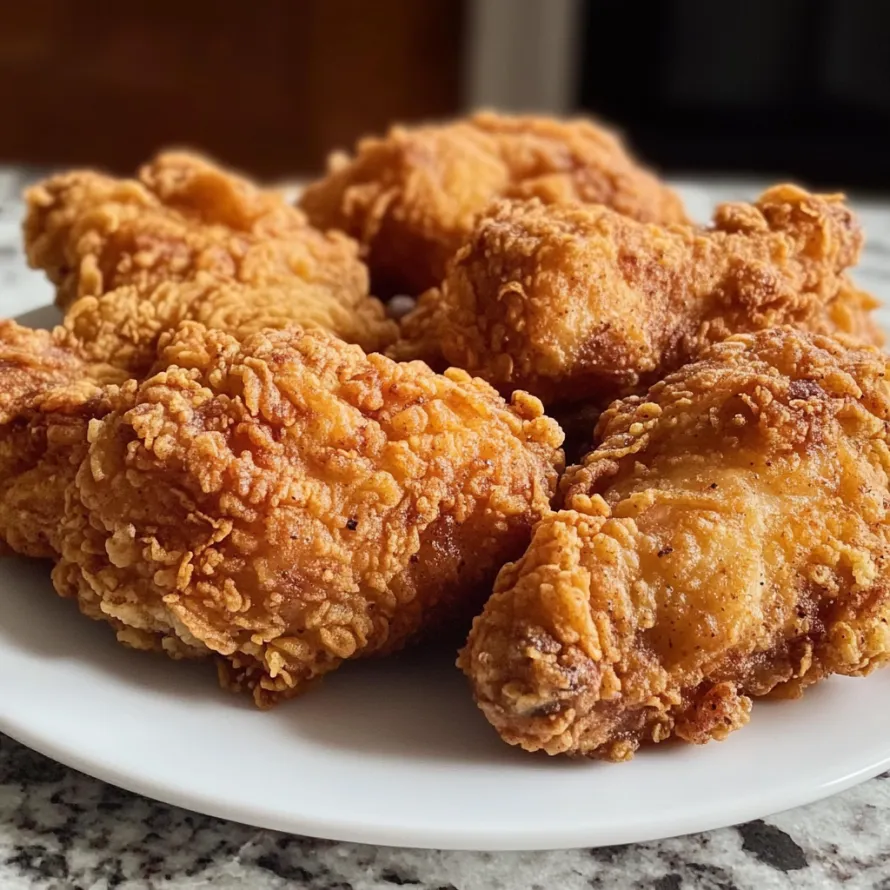 Pin it
Pin it
Southern buttermilk fried chicken turns plain old chicken into a party of crunch and taste. When tangy buttermilk meets carefully picked spices, you get chicken that stays super juicy inside with an amazingly crisp outer layer.
I made this chicken for our backyard party last summer, and folks were standing in line wanting more. Soaking it overnight in buttermilk and coating it with just the right spices made it so tasty that even the fussiest eaters couldn't get enough.
Key Ingredients
- Chicken: Get a whole chicken cut up or your favorite pieces with skin left on for extra juiciness.
- Buttermilk: Go for the whole-fat kind as it makes the chicken super tender.
- Kosher salt: Works better for soaking and gives more balanced flavor.
- Black pepper: Grind it fresh for the strongest smell and taste.
- Garlic & onion powder: Adds richness without taking over.
- Paprika: Brings a nice warmth and pretty reddish color.
- All-purpose flour: Creates the base for your crunchy coating.
- Cornstarch: Makes the outside coating extra light and crispy.
- Baking powder: Helps form tiny bubbles for more crunch.
- High-temperature neutral oil: Choose peanut or veggie oil for consistent frying.
Cooking Steps
- Getting The Buttermilk Soak Ready:
- Mix buttermilk with salt, pepper, garlic powder, onion powder, and paprika in a big bowl. Put chicken in, making sure it's fully covered. Wrap and stick in the fridge for 4 hours minimum, but overnight works best.
- Setting Up Your Coating Area:
- Combine flour, cornstarch, baking powder, salt, and the rest of your spices in a wide dish. Add a spoonful of the buttermilk marinade to make little clumps that'll make your chicken extra crunchy.
- Putting On The Coating:
- Take chicken out of the buttermilk, letting extra drip off. Push each piece firmly into the flour mix until fully covered. Let your coated chicken sit on a wire rack for 10 minutes before frying.
- Frying Your Chicken:
- Get your oil to 350°F in a heavy pot or deep cast iron pan. Gently drop chicken pieces in, working in small batches so they don't crowd each other. Keep oil between 325°F and 350°F and fry until golden (about 5 minutes each side).
- Final Touches:
- Move your partly fried chicken to a wire rack on a baking sheet and bake at 350°F until it hits 165°F inside, roughly 15-20 minutes.
My grandma always used free-range chickens and swore they tasted better. After trying all sorts over the years, I totally back her up. You can really taste the difference between regular grocery store chicken and good free-range ones.
 Pin it
Pin it
Tasty Upgrades
Good Southern fried chicken needs balance. The buttermilk brings tang, while spices add richness. Try throwing in some fresh thyme or a bit of cayenne for more flavor. Some folks add hot sauce to the buttermilk for a gentle kick.
What To Serve With It
This chicken goes great with smooth mashed potatoes, fresh corn on the cob, and tangy coleslaw. For a true Southern meal, add fluffy buttermilk biscuits with honey butter on the side.
Making It Your Own
Want it hotter? Add cayenne to both the soak and coating. Need gluten-free? Switch regular flour for a good gluten-free mix with extra cornstarch. To cut down on fat, take off the skin before soaking, but know your chicken won't be as crispy.
Using Up Extras
Store cooled fried chicken in a sealed container in the fridge for up to three days. To warm it up, put it on a wire rack in a 375°F oven for 15 minutes. Don't use the microwave - it'll make your crunchy coating go soft.
 Pin it
Pin it
Southern fried chicken stands for welcome and tradition. This method gives you sure-fire results any Southern grandma would brag about. Whether it's the star of Sunday dinner or packed for a picnic, it'll make memories along with amazing flavors.
Frequently Asked Questions
- → How long is it best to brine the chicken?
- Let the chicken sit in the buttermilk brine for at least 4 hours. If you've got time, let it soak overnight for ultimate tenderness.
- → What does buttermilk in the flour do?
- Mixing a little buttermilk into the flour makes crumbly clusters that fry up into crispy little bits on the chicken.
- → Is it okay to use oil instead of shortening?
- Sure, you can swap shortening with vegetable oil. Shortening, though, gives an even crisper finish.
- → How can I tell when the chicken's ready?
- The meat’s ready if the breasts hit 150°F and drumsticks or thighs measure up to 165°F. A thermometer keeps it easy!
- → Does the double-frying really change anything?
- Yes, if you're after a louder crunch! That extra fry step after chilling makes the coating stay crispier for longer.
- → Can this dish be prepped in advance?
- Totally! Cooking it, then refrigerating it, and reheating later makes for a crispier, satisfying crunchy bite.
